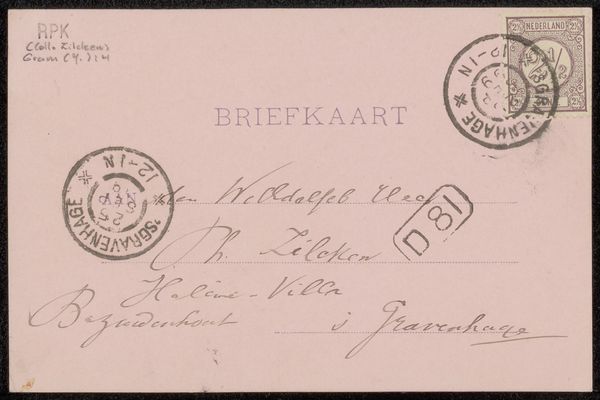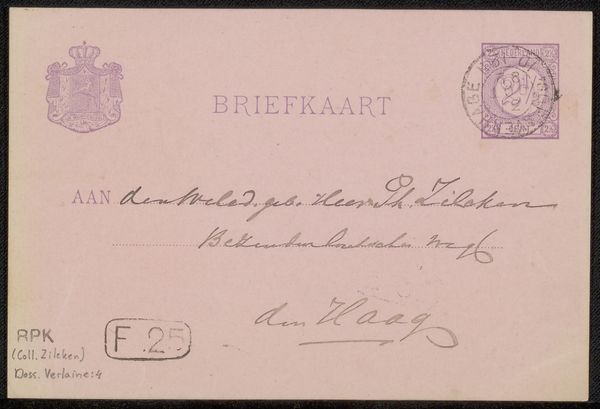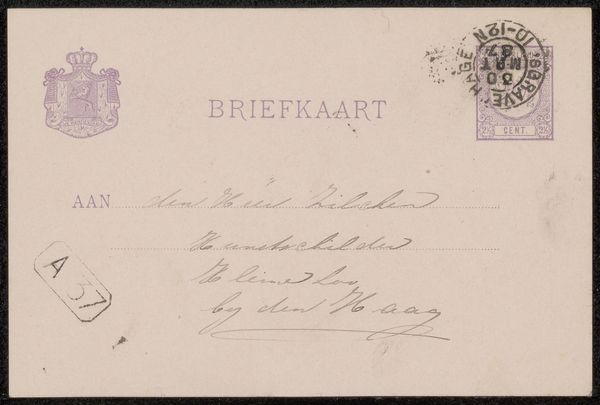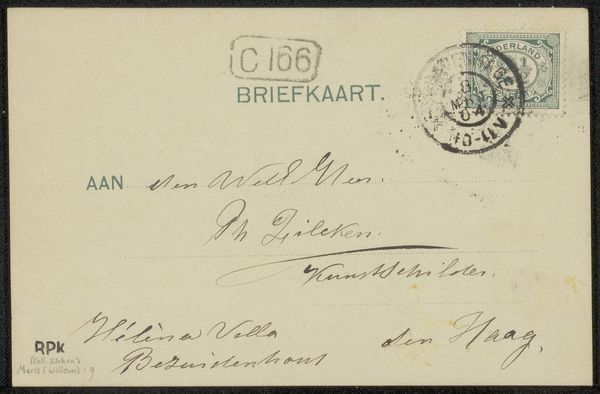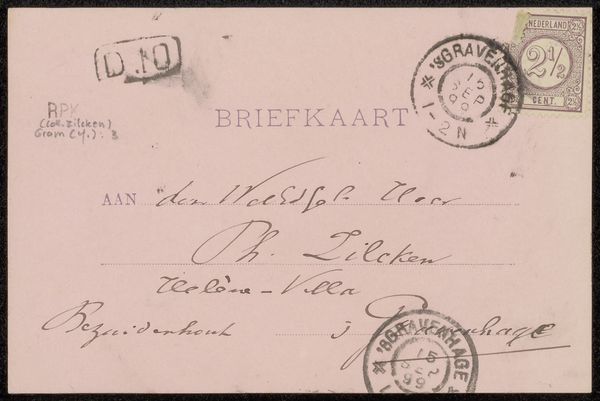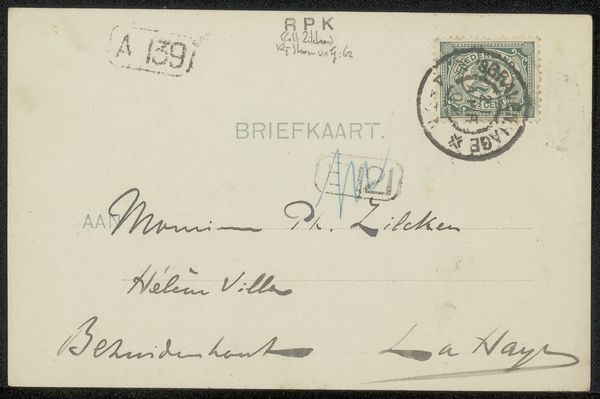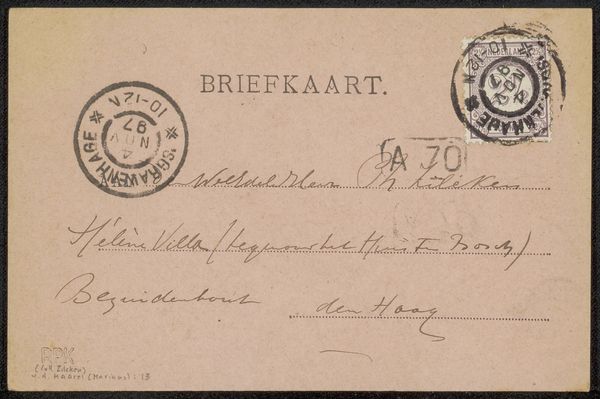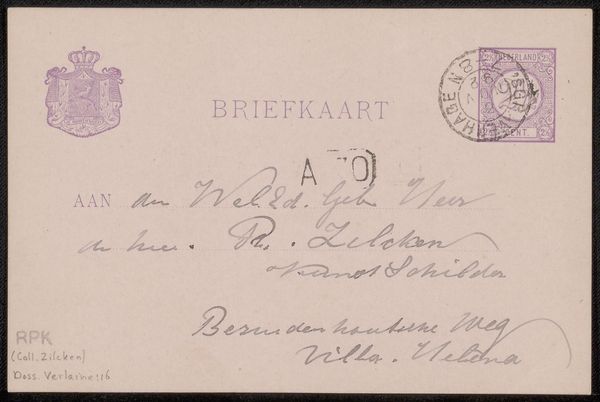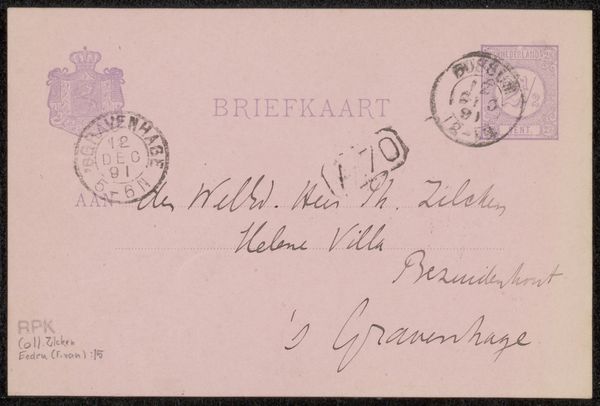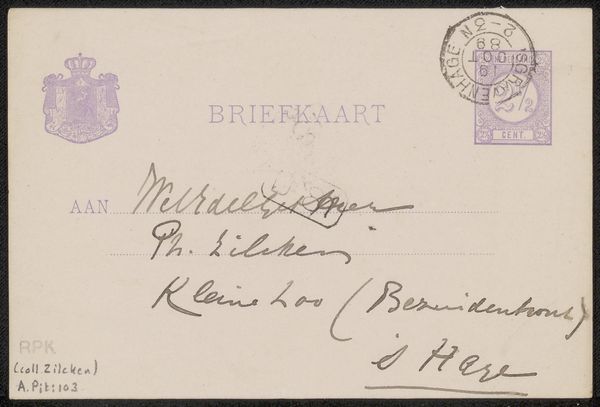
ink, pen
#
blue ink drawing
#
pen sketch
#
personal sketchbook
#
ink
#
pen
#
calligraphy
Copyright: Rijks Museum: Open Domain
Curator: We're looking at a small pen sketch in blue ink called "Briefkaart aan Philip Zilcken," possibly from 1899 by Gerlof van Vloten. Editor: My first impression is one of ephemerality; it’s so light, like a fleeting thought captured on paper. The stamps and handwriting convey a sense of personal connection across time. Curator: It offers a fascinating snapshot of late 19th-century correspondence. Consider the function of a briefkaart; in its design, it suggests immediacy and a specific social practice around postal communication. Editor: Precisely, the rigid structure inherent in a postal card – the stamps, postal markings, and calligraphic precision of the address itself – form an interesting tension with the more freely rendered handwriting. It implies a blend of officialdom and intimacy. Curator: Yes, we have that relationship established by social expectation but it also reminds us that the sender is situated within a world rapidly structuring toward modern administrative and regulatory policy. Editor: In that moment, art like this can begin to challenge notions of authorship in unique ways. A formal act of sending meets the individuality of the message. Curator: Note how Van Vloten seems conscious of the postcard's physical limitations. Every element—address, brief note—is carefully positioned and oriented within the defined space. He makes effective choices within constraints. Editor: Constraints which underscore the way in which cultural infrastructures actively shape how artists create. This “Briefkaart” exemplifies that paradox inherent in publicly available forms. Curator: Agreed. These humble postal artifacts provide rich insights. Editor: Indeed, the sheer simplicity encourages close analysis.
Comments
No comments
Be the first to comment and join the conversation on the ultimate creative platform.
